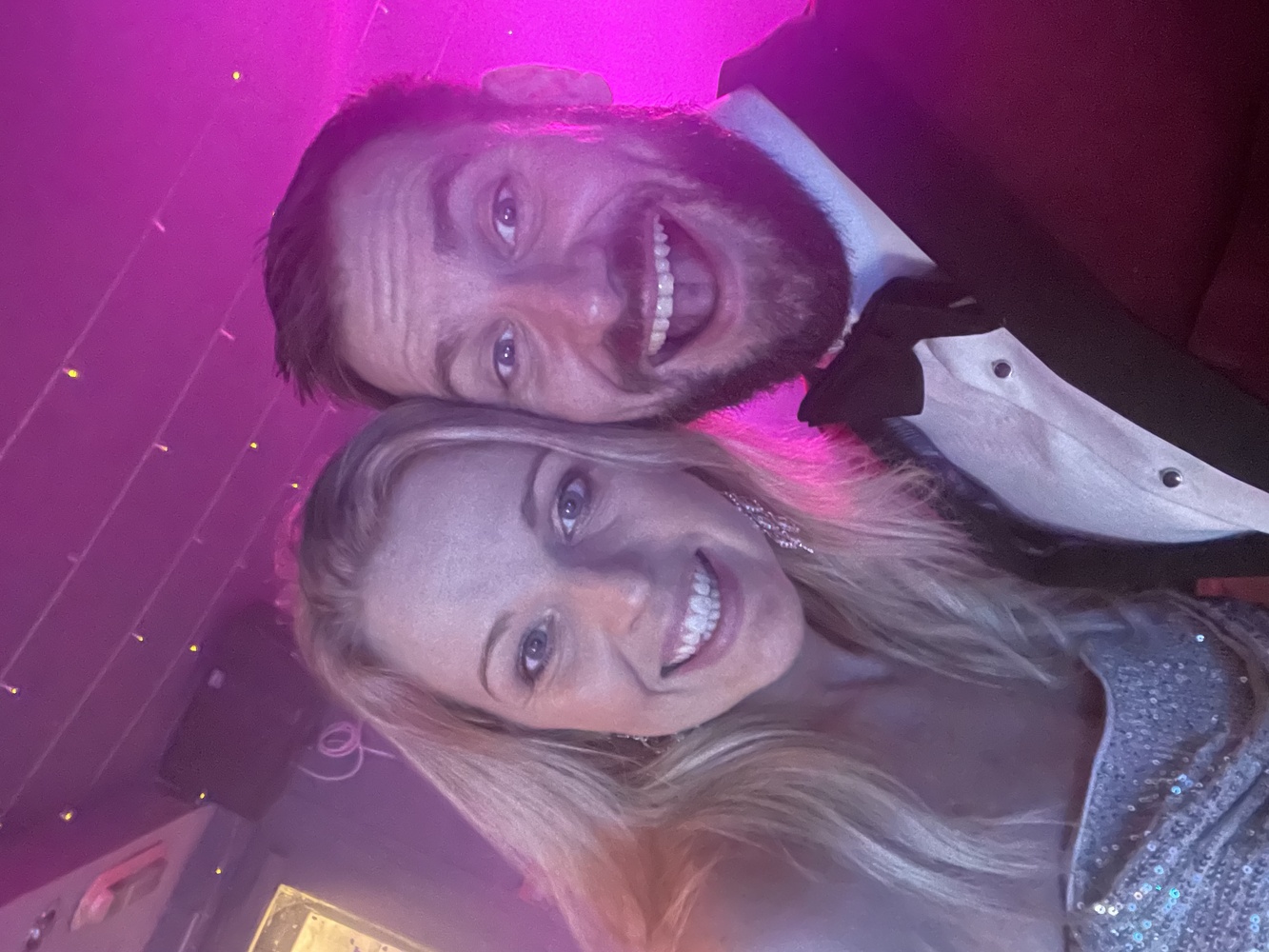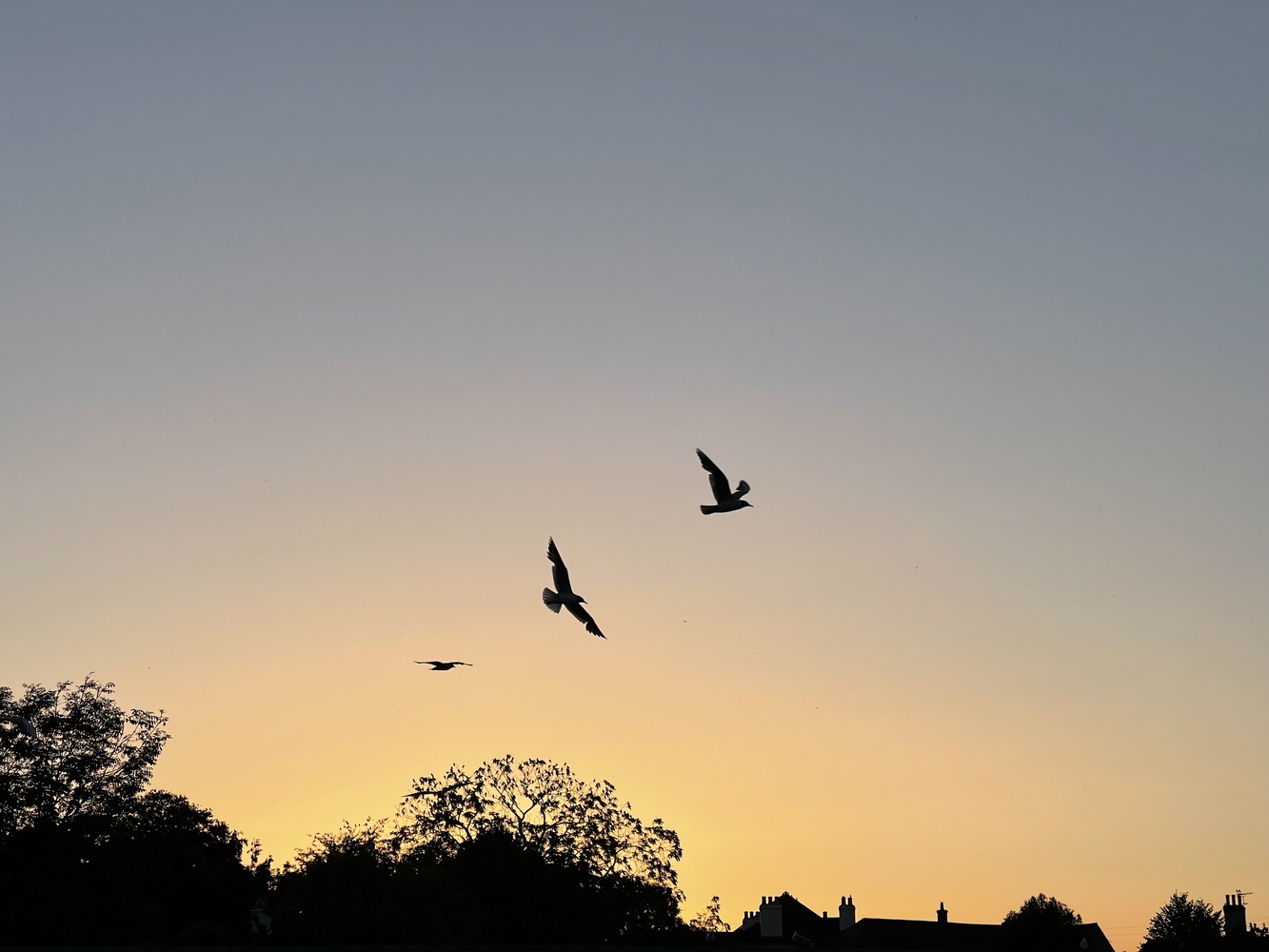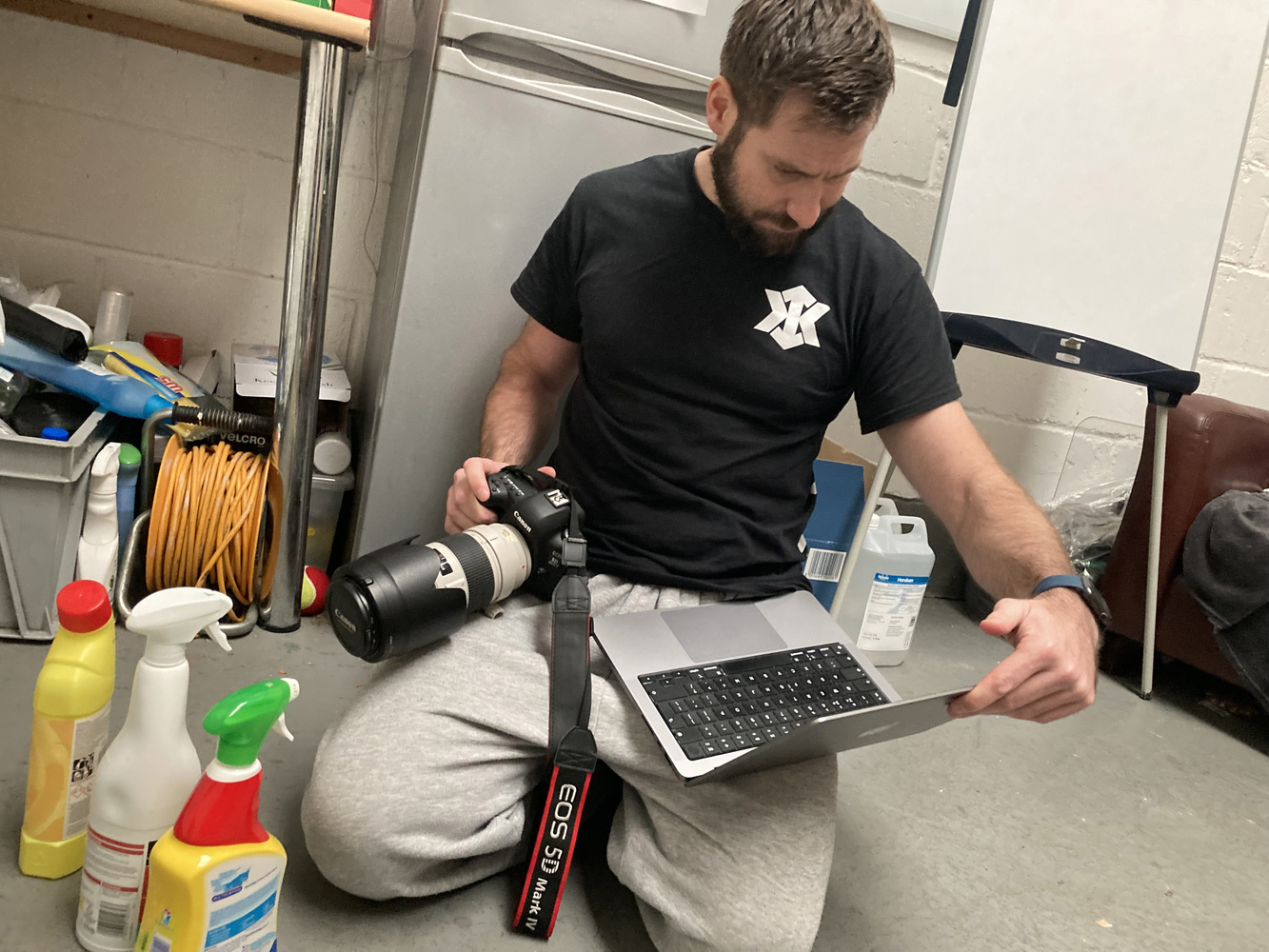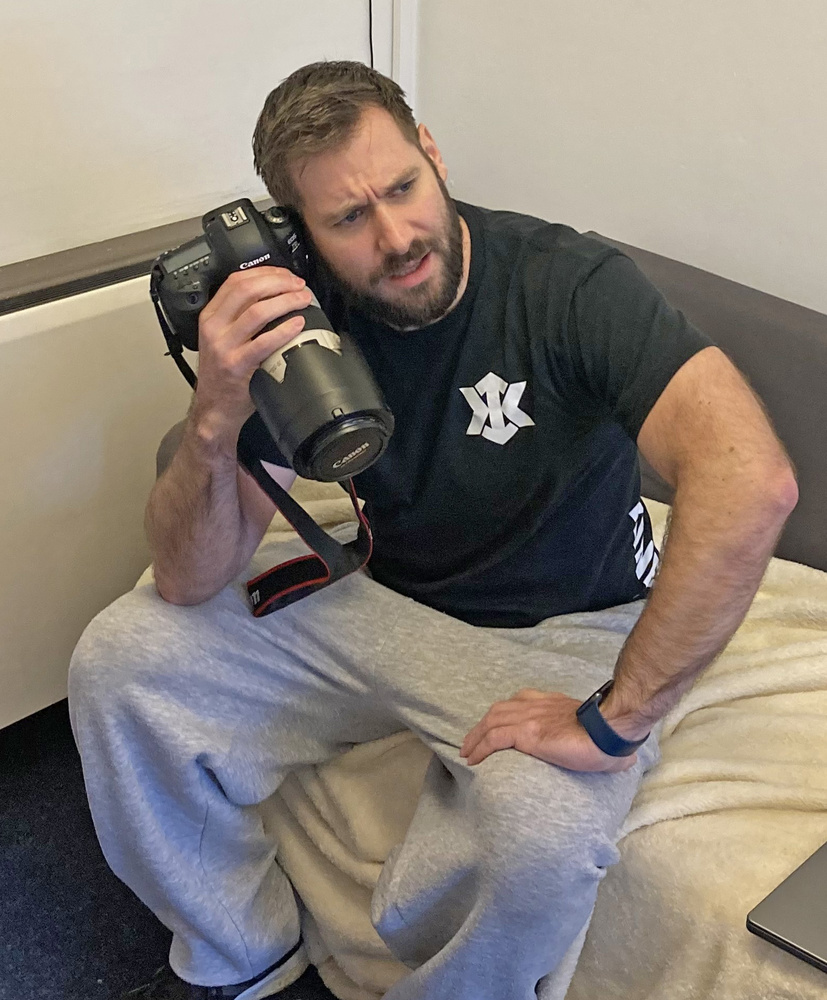Every year, mobile camera technology improves, and every year, I see more articles comparing phones to professional cameras. I decided to carry out my own comprehensive test to finally decide which device is better, the phone or the DSLR.
It's fair to say that cellphone cameras have become very impressive imaging devices in their own right. Modern phones produce quality images, often using computational photography to make up for the relatively small sensor sizes. As phone cameras improve and the image-processing software improves, every year, I see more and more articles comparing cellphones with dedicated cameras, either in an attempt to prove that cellphones are now superior to dedicated cameras or trying to prove that small sensors can never match the performance of a full-frame imaging device. Regardless of the conclusion in the articles, there's always a disagreement in the comments section around whether anyone cares about pixel-peeping or that you'd struggle to make a sharp, large image from a cellphone capture.

I decided to perform a comprehensive set of real-world tests to finally settle, once and for all, which device is superior: the cellphone or the DSLR.
For my tests, I'll be using my own devices, an iPhone 12 Pro Max with a 12-megapixel sensor and a Canon 5D Mark IV DSLR with a 30.1-megapixel full frame sensor. And that's all the specs I'll be comparing, as this is a real world use test.
Imaging
First up, what are the images like? I was very impressed at the photo quality from the iPhone 12 Pro Max, but the files simply don't have the same level of information for highlight and shadow recovery.
Here are two different images taken on the DSLR: 

Both of these images were taken in relatively low light, and they demonstrate how well the full frame sensor handles images taken at high ISO. The second image also used an off-camera flash, which I have struggled to get working efficiently with the iPhone. So far, the DSLR is off to a strong start.
Here are two different images taken on the iPhone:


The first image demonstrates an excellent feature of the iPhone, and that's the front-facing selfie camera. Despite the image being a bit mushy because of the low light and small sensor combination, it is incredibly practical to be able to easily compose selfies with the 6.7" screen. Many modern cameras, especially mirrorless cameras, do feature articulated screens which allow gratuitous selfies to be taken on cameras costing thousands of dollars. The second image was taken while having a picnic by the river at sunset last summer. The available light allowed a fast enough shutter speed to capture sharp enough images of the birds in flight.
It's a tough competition: the DSLR produces large, detailed raw files which allow a lot of latitude in post-processing. The iPhone, however, produces perfectly acceptable images for posting to social media with often only marginal loss of quality through filters and in-phone image processing.
Winner: DSLR
Practicality
This one seems like a no-brainer. The iPhone fits in my pocket: it's 7.4 mm thick and weighs 228 g. The 5D Mark IV is 75.9 mm thick and weighs 800 g without a lens attached! I very rarely leave the house without my iPhone, but I need to specifically pack the DSLR and a lens or two into a bag, charge batteries, and format cards before use.
It's often said that the best camera is the camera you have with you, and I usually have my phone with me.
Winner: iPhone
Connectivity
The iPhone has 5G connectivity, as well as Bluetooth and Wi-Fi, which can easily be set up through a simple touchscreen menu system. The 5D Mark IV also has Wi-Fi support for file transfers, but sadly, there's no browser for reading the news or checking your email on the 3.2" touchscreen.
Winner: iPhone
App Support
The iPhone comes with the Apple App Store pre-installed, and this allows access to thousands of third-party apps ready to be downloaded instantly. Unfortunately, there's no built-in App Store on the Canon DSLR. I was able to download software updates, as well as third-party firmware, such as Magic Lantern, but these required use of a computer to save files to an SD card to use in the camera.
Winner: iPhone
Ergonomics and Appearance
It's fair to say that the iPhone was designed with photography in mind, whereas the DSLR was designed with photography as a primary use. The DSLR has all the controls at my fingertips I need to change exposure and adjust the image I want to capture. That said, it's not difficult to take a photograph or control imaging on the iPhone. It simply doesn't feel as though it was built with photography as its primary function. The DSLR also looks a lot more like a camera than the plain glass slab of the iPhone. When going on professional shoots, the client will generally expect the photographer to arrive with a dedicated camera. You're likely to impress clients a lot more if you have a camera instead of just using a cellphone.
Winner: DSLR

Now onto the real world tests. I chose these real-world situations I encounter on a regular basis where I use these devices to finally decide which one is better.
Portraiture
Despite having a Portrait Mode on the iPhone, the artificially blurred backgrounds and lighting effects just don't match up to a large sensor with a suitable portrait lens. While the iPhone might be slightly easier to set up and start shooting with, the DSLR really does win in this category, if nothing else than for the compatibility with a number of off-camera flashes. When I'm booked for a portrait shoot, I'm taking the DLSR every time.
Winner: DSLR

Grocery Shopping
This is a very common real world application which I'm sure we're all familiar with. I'm at home, my partner is at the store, and she texts me asking which products we need to buy. Using the iPhone, I can take a quick shot of the product and send it to her instantly. With the DSLR I had to take the shot, then connect to my laptop and process the image, before sending the image back to her. I found that in most cases, she had left the store before receiving the image, not a strong point for the DSLR. I was able to streamline this method somewhat by tethering the DSLR to my iPad, then sending the JPEG from the iPad to Tasha.
Winner: iPhone

Posting to Social Media
Another very common use for the DSLR and the iPhone is posting content to social media. In a world where people measure their value as a human being by how many likes and followers they have, it's incredibly important to be able to post high-quality content to your preferred social media platform quickly. While many people do still aim to produce high quality social media content using professional gear, I've definitely noticed a shift towards posting quantity over quality. There are some amazing creators out there who don't seem to get as much recognition as they could if they just took more selfies because they "felt cute" (might delete later). I find it shocking that Canon haven't yet added a dedicated Instagram app, complete with filters, to their legacy cameras. The iPhone really is the winner here when it comes to posting masses of mindless content to feed the insatiable appetites of social media users.
Winner: iPhone
Communicating
As mentioned above, at the time of writing, there's no Instagram app, no Twitter, no Facebook, and no YouTube available on the Canon 5D Mark IV. While we can hope that Canon rectify this in a future firmware update, I'm fairly certain that they won't implement phone functionality due in part to the placement of the microphone and speaker and the lack of any cellular connectivity. As I use my iPhone daily for communication as well as imaging, until Canon allow voice calls and texting from their range of interchangeable lens cameras, I'll take my iPhone out every time I leave the house.
Winner: iPhone

Results
DSLR 3/9
iPhone 6/9
There we have it, iPhone is conclusively the best of these two devices in my comprehensive real-world tests. There's no further discussion to be had, despite some minor compromises around image quality, the iPhone is absolutely a better device than the Canon 5D Mark IV.
Conclusion
While researching for this article, I found a lot of articles comparing various cellphones to various professional cameras. I was very surprised that the other articles focussed almost exclusively on image quality, videography, and photography, when the cellphone is such a highly versatile device, which led me to come up with my list of real-world scenarios.
While performing my tests and writing this article, it did occur to me very briefly that perhaps these two devices might have been built for completely different purposes, then I thought that can't possibly be the case with so many tech journalists desperate to compare them to each other over and over again.
What are your thoughts? Are you going to throw out your camera gear and buy an iPhone instead? Let me know in the comments.







i love the sarcasm on this topic, absolutely brilliant!
Thank you. Next week I’ll be comparing a Formula One car and a minivan to see which one can fit the most luggage in 😂
Excellent real-world test, especially since I use an iPhone and a 5d Mark IV. The iPhone is always with me, but the Canon requires almost as much effort as a film camera. Both the iPhone and DSLR are cheap to operate. Camera manufacturers should come at it the other way and add phone features! A smaller camera with zoom lens and easy internet access could be a big success.
" Are you going to throw out your camera gear and buy an iPhone instead?"
No chance. I own an android and they will pry my DSLR (7DMkii) out of my dead cold hands.
Great review.. Looking forward to the F1/Minivan review, be sure and bring lots of bundgie cords. :-D
Until I saw the response regarding sarcasm, I honstly thought you were serious.
The phone, virtually any phone, can be used as a camera. It is a multi-use devise. A camera is not. They both do some things well and some not so well. The one thing they both can do is be a paper weight when they quit working.
I have another suggestion for your comparison tests: try carving your turkey or any other meat with an electric knife and an electric chain saw. Why not? They both cut stuff.
I am not totally certain that people who compare phones to cameras are really into photography. It always sounds like a tech thing like a want vs a need.
Oh for sure, tech enthusiasts who are into new phones may not be interested in taking up photography, but they will love to tell their friends how their new phone is “as good as” a professional grade camera.
I don’t know any legitimate photographers who would even consider using a cellphone over their pro gear for a photoshoot.
Different products for very different needs
LOL! But if my wife read your review, she'd agree with your conclusion. Seriously. She sees no reason for me to get a real camera when my iPhone 12 mini works fine. But if you look at my gear, you'll see why I'm driven to do so (as fast as in your F1). My budget is a woeful constraint, and my wishlist is enormous. Ah, if wishes were fishes, and I had better luck fishing than standing hip deep in cold water...
Thank you such an articulate comment. Perhaps you hit the nail on the head there, camera vs phone comparisons are for people who aren’t really into photography, as there’s no legitimate comparison to be made (other than they both produce a digital image)
Loved this! 😁 Sarcasm and cheeky. Well done 👍🏾
Thank you. It’s nice to have fun sometimes 😊
What I generally say is that if the shot is easy the phone can probably do it nearly as well as the DSLR. The phone stinks in most cases where the shot isn't so easy. I can practically guarantee a wildlife encounter by not packing my camera on a hike.
You missed a number of other "real world tests"
- as a door stop - obvious winner DSLR
- for self defense - again ditto above (try swinging a cell phone at a bad guy!!)
- etc
I can think of many other cases where you completely overlooked the in your face natural advantages of the DSLR
You raise some excellent points, I feel a follow up article coming!
You could share pics of items needed from the grocery store much easier if you took the lens cap off. ;) iPhones don't have lens caps. Winner: iPhone
Surely the open laptop suggests the photos had already been taken in this totally legitimate real-world test?
What is a "DSLR"? ;-)
But seriously, each one is like one of your electronic children. You can't pick a favorite. Each one is excellent in its own way.
A nice sense of humour complements a nice sensor. :) A phone is diifficult to handle in rough weather conditions due to the lack of a proper grip. I've also had some nasty sudden switch-off surprises with phones in the past in situations where I thought the charge level was still ok, a proper camera is a clear winner for me. Also, one doesn't have to pack a bag, small pocket-size cameras (Nikon J5, Olympus E-P, Ricox etc.) are available, and they are ergonomically much better than a phone, but I do use my phone to snap some frames almost every day. P.S. One fairy may die every time one doesn't take the lens cap off (remember the time when rangefinders were very common) before taking a pic.
For any serious discussion about this subject the the question is if reality lives up to the marketing hype. How good are little cameras in phones ?
Until a year ago I paid no attention to phone photography. Why would I, I own cameras ?
Then I upgraded my antique phone to the highly regarded Galaxy S21U and the hype. I tested it by making the bold move to not pack a single Canon for a several months long vacation.
If photography is so important, manufacture the phones to be more like cameras. An LCD that can be viewed in sunlight. Maybe a shutter button so you dont need to oddly hold the devices with finger tips.
My pricey phone/camera nearly held its own.
Its no Leica.
Personally, joking aside, I don’t think that phones will ever replace dedicated professional cameras, nor should they.
But I do think that cellphone cameras might be the death of consumer compact cameras as that’s the segment of the market they fill.
Phone cameras are competent for their size, and convenient enough to have in your pocket at all times.
My current kit was a pro-level flagship Olympus E-3, with a rather complete set of accompanying glass. As an enthusiast amateur photographer, I have never needed anything more than the 10MP that the E-3 offers, given I rarely ever print my work, so I never felt the desire to upgrade, despite the advances over the years, with sensors, lenses, computational photography, etc. Virtually all of my work is viewed on a screen of some sort. On the rare occasion I do print something it's never very big, so 10MP has never been a hindrance in that regard.
That said, I have indeed enjoyed all of the advances made on smartphones over the years, and I admit the vast majority of my photos are taken with them, given the day-to-day convenience. For virtually everyone, photography has gone from being a hobby to being an every day part of everyone's life. Smartphones have made photography just an every day part of life now.
One of Sony's general managers have stated by 2024 the image quality on smartphones will be superior to DSLRs, but I think it's merely technical. Still, it has to be said that the camera has indeed evolved in both form and function. I don't see abandoning a traditional kit as being anything special. We've moved on from rotary phones, VCRs, CRT screens, etc. Cameras, in their standalone form, have becomne something that only commercial photographers and die-hard enthusiasts will continue to use, though fewer and fewer.
I enjoyed the sarcasm.
Now we have growing use of newer technology such as AI sharpening and AI noise reduction even AI gigapixeling an image up to 40 times the original number of pixels. Then there is the question how much better is one method or camera (or phone) than the other? How do or should you measure / determine that? What actually matters?
If the viewer isn't pixel peeping then does the results of pixel peeping matter. Of course a better lens and sensor will resolve more detail and dynamic range.
My question is: "is the photo hanging on the wall in front of you or is the photo hanging on the wall behind you better?" Same subject taken at the same time. Identical lighting of the print. One photo taken with 12 MP smart phone and one taken with a 48 MP pro camera and lens. Both expertly edited by the same person using latest technology. They look kind of identical. Printed 36" x 24" and viewed from 52" away. Look at one then turn around and look at the other. Do that a few times over 30 seconds or a minute. Good luck in picking the winner.
If they invent the perfect, fully automated AI camera it will simply spin around on a mount on your head and take perfect photos of everything in sight. Every worthwhile image will be captured perfectly and photography as we know it will end.
I'm not quite clear from your post whether you've tried making the direct comparison, or you're suggesting it? I've started shooting direct comparisons; same scene, same shot, same time, iPhone 12 Pro Max vs EOS 5D Mk IV. Of course viewed on phone for 0.5secs = no visible difference, but for printing (my priority) there's still a world of difference IMHO, esp in noise and dynamic range, even with iPhone RAW.
That said, I'll fess up to longing for Apple to get a damned 48mp sensor into all 3 (now 5) of the pro max lenses*. Having made the bold move of leaving the 5D at home on our last holiday (I know, right?) I believe bigger iPhone sensors could be invaluable in maintaining marital harmony.
* Rumoured iPhone 16 Pro Max: why why why only apply the 48MP to one lens Apple (the ultra-wide)? Is it b/c the other 12mp lenses are really just crops? Either way, Pffft. And then there's also the restriction on focal distance... Come on Apple, hurry up with that periscope lens!
Ah thank you. We all know a fairy dies every time someone says 'I don't believe DSLRs are better than than phones', so if you believe, clap your hands! A lesser-known fact though is that every 'cute' Insta phone selfie also kills a fairy soul. I'd love to stamp out this egregious practice, but I fear hand-clapping may be misinterpreted in these instances. Ideas?